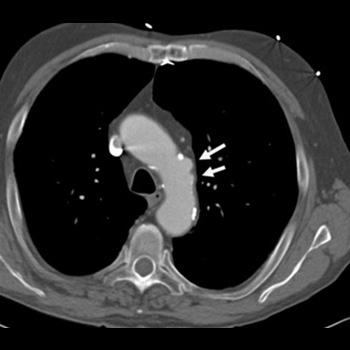Keywords
Aortic ductus diverticulum, cardiac imaging, aortic dissection
Abstract
Background: Aortic dissection is a critical condition often presenting with acute, severe chest pain and haemodynamic instability. Early diagnosis is essential to mitigate the high mortality risk. Imaging modalities play a pivotal role in diagnosing aortic conditions, but determining the appropriate method can be challenging.
Case description: We report an asymptomatic 55-year-old female undergoing transthoracic echocardiography (TTE) for mitral and aortic valve regurgitation surveillance. Incidentally, a suspicious flow jet at the distal aortic arch was discovered, raising concerns of aortic dissection. A subsequent CT angiogram (CTA) identified this as an aortic ductus diverticulum at the aortic isthmus, not a dissection.
Discussion: Aortic dissection has a high initial 48-hour mortality, with even surgically managed cases exhibiting a 26% risk. Imaging tools such as a transoesophageal echocardiogram (TEE), CT and MRI scans are instrumental for diagnosis, with their applicability depending on the patient’s clinical situation. The aortic ductus diverticulum, a developmental outpouching, often mimics other aortic pathologies, emphasising the importance of accurate imaging interpretation.
Conclusion: Aortic ductus diverticulum presents diagnostic challenges due to its resemblance to other aortic conditions. Advancements in imaging modalities improve diagnostic accuracy, but awareness and careful interpretation are paramount to ensure timely and appropriate patient care.
References

Views: 293
HTML downloads: 52
PDF downloads: 263
Published:
2023-11-29
Issue:
2024: Vol 11 No 1
(view)










